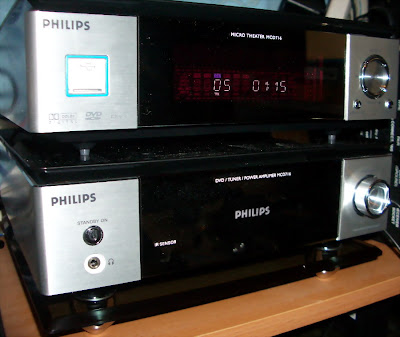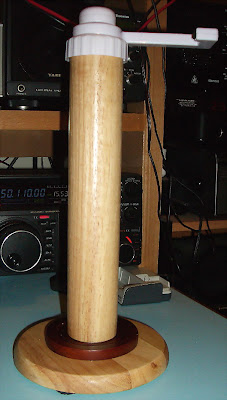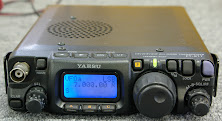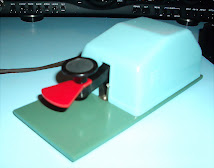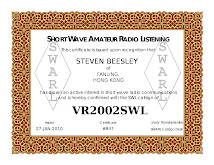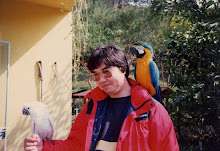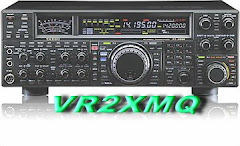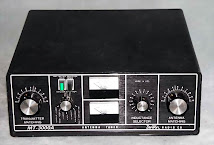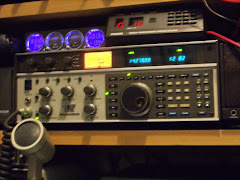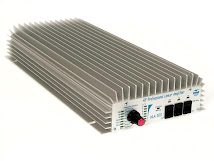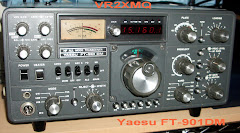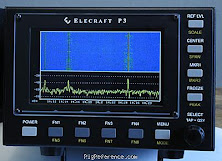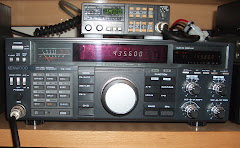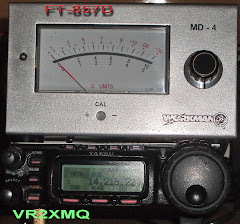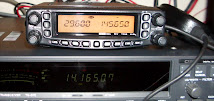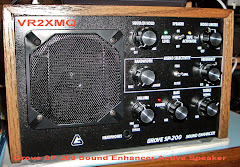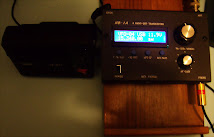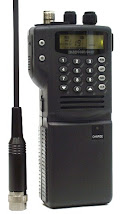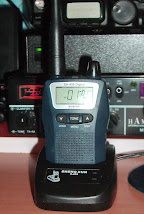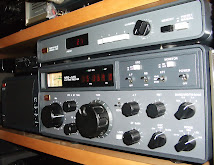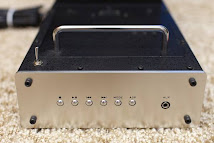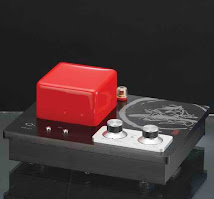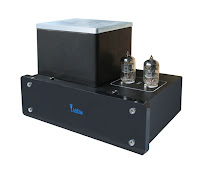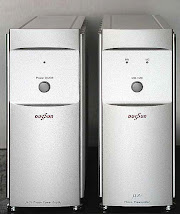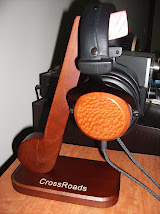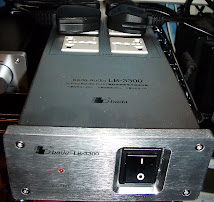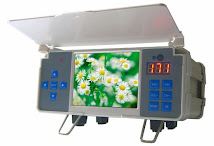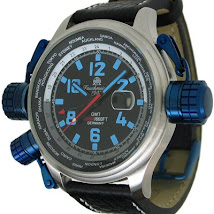
Sunday, March 29, 2009
Source: Philips MCD-716 System.

Saturday, March 28, 2009
Little Dot VI Flagship, MK VI SEPP OCL Balanced Tube Heaphone Amplifier

Some pictures of my Little Dot, Mk VI SEPP OCL Balanced Tube Headphone Amplifier, this is the flagship of Little Dot:


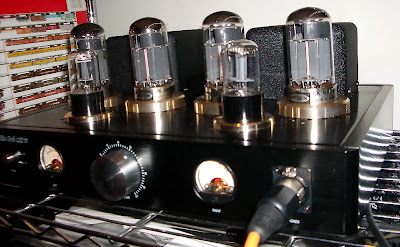
For more details on the Mk VI please look at more photos and specs at: Little Dot Forum
Thursday, March 26, 2009
"Take A Step for Children" Charity Walk on 22nd March 2009
Last Sunday 22nd March, 2009 I was one of the many volunteer workers helping out in the 'Take a Step for Children' Charity Walk which took place on Victoria Peak, we've close to 1,400 participants for the event. We took time out to raise funds for charity and less privileged children and had a nice scenic walk around
:
Tuesday, March 24, 2009
Woodworking: A Simple Wooden Tube Stand.
Saturday, March 21, 2009
On A Roll: Tube Rolling - Indeed 6N3 Buffer Amp And 6N11 Class A Headphone Amp.
For the 6N3 Tube Buffer Amplifier I changed the Sino 6N3 tube for a JAN-GE 5670W which is a mil-spec rugged version of the 5670 and is fully compatible to the 6N3 as a drop in replacement. In fact I have even higher hopes and have a Western Electric 2C51 which is also compatible but thought I would try the 5670 first. The GE 5670W as seen from the box was manufactured in March of 86.
The change of the 6N3 to the GE 5670 was so dramatic, it was like night and day. The Qinpu Q1 which is hooked up to this buffer immediately benefited and the sound was so sweet, resolution, detail and impact vastly improved and narrowed the gap with the Indeed Class A Headphone Amp. One can only imagine what the WE 2C51 would do, but I will find out soon. The cost for the upgrade is also low between 6 to 8 US$ and well worth the upgrade. But if you are thinking of the Western Electric 2C51 then this will set you back US$50.00.

 Above photo: The 6N3 on left and the GE 5670W on right with box. The 5670W is a much shorter tube then the 6N3.
Above photo: The 6N3 on left and the GE 5670W on right with box. The 5670W is a much shorter tube then the 6N3. Below: The Western Electric 2C51 tube known as WE 396A.
 For the 6N11 Tube Class A Headphone, the Sino 6N11 tube would be replaced by a JAN-Philips 6922 which is a mil-spec grade 6922 and also a direct drop in replacement for the 6N11 tube. The manufacture date for the 6922 was May, 87. So why the choice of the Philips 6922? The Philips 6922 low noise tube type was rated the "best buy" by Vacuum Tube Valley magazine in their 6DJ8 / 6922 tube showdown. Vacuum Tube Valley magazine cited a better bass end and "less offensive" high frequencies as two of the main reasons for their choice. Certainly once the 6N11 was replaced by this tube it was immediately apparent that the bass was even tighter and better controlled and resolution was even higher and more refined then before the change. Transients were much much better now with the 6922. The Jan-Philips 6922 is available as NOS for about US$20.00.
For the 6N11 Tube Class A Headphone, the Sino 6N11 tube would be replaced by a JAN-Philips 6922 which is a mil-spec grade 6922 and also a direct drop in replacement for the 6N11 tube. The manufacture date for the 6922 was May, 87. So why the choice of the Philips 6922? The Philips 6922 low noise tube type was rated the "best buy" by Vacuum Tube Valley magazine in their 6DJ8 / 6922 tube showdown. Vacuum Tube Valley magazine cited a better bass end and "less offensive" high frequencies as two of the main reasons for their choice. Certainly once the 6N11 was replaced by this tube it was immediately apparent that the bass was even tighter and better controlled and resolution was even higher and more refined then before the change. Transients were much much better now with the 6922. The Jan-Philips 6922 is available as NOS for about US$20.00.
 Above photo: The Philips low noise Jan 6922 on the right with box before rolling. The 6N11 and the 6922 are roughly the same size.
Above photo: The Philips low noise Jan 6922 on the right with box before rolling. The 6N11 and the 6922 are roughly the same size.Audio Technica ATH-ESW9 Fakes Hit The Streets.

Friday, March 20, 2009
Home Grown Custom Made RCA Interconnects: Van den Hul M.C. D102, MK III Cables.
 Made another home grown custom cable today, using the Van den Hul M.C. D102, Mk III Hybrid (Halogen free) cable and some very nice old NBS gold plated RCA plugs I had. A pair of 1M length interconnects were made up. The Van den Hul cable is said to be constructed in a pseudo-balanced configuration, mixing carbon fibre with more conventional silver-plated copper and with HULLIFLEX jacket for insulation. The pitch is that this cable has capacitance, dielectric loss and microphony all on low side and thus said to ensure that the signal remains pure and unpolluted giving a natural and musical feel. I much prefer the NBS RCA plugs to the originals.
Made another home grown custom cable today, using the Van den Hul M.C. D102, Mk III Hybrid (Halogen free) cable and some very nice old NBS gold plated RCA plugs I had. A pair of 1M length interconnects were made up. The Van den Hul cable is said to be constructed in a pseudo-balanced configuration, mixing carbon fibre with more conventional silver-plated copper and with HULLIFLEX jacket for insulation. The pitch is that this cable has capacitance, dielectric loss and microphony all on low side and thus said to ensure that the signal remains pure and unpolluted giving a natural and musical feel. I much prefer the NBS RCA plugs to the originals.I bought the cable from a Van den Hul cable stockist and went home and soldered on the RCA's. Home grown custom made cables give equal performance at many times less the price paid for original made up cables from the manufacturer. Of course I used some high silver content solder for the connectors.

The MC D102, Mk III have won numerous awards in the past including:
- What Hi-Fi 1998:Best Buy
- What Hi-Fi 1999:Product of the Year
- What Hi-Fi 2000:Best Buy
- British Audio & Hi-Fi News 2001:Best Interconnect
- What Hi-Fi 2001:Product of the Year
- Hi-Fi Choice 2002/2003:Product of the Year


VdH Specs:
| Cable Type: | Triple screened twin core (Balanced) |
| Conductor Material: | HYBRID: High purity dense Silver coated high purity Matched Crystal OFC + Linear Structured Carbon ® saturated layer(s) |
| Design Purpose/ Application Area(s): | Balanced and unbalanced audio interconnect |
| Eff. Conductor Ø/Eq. AWG No./Strands: | Cores: 0.31 mm² / Cores: ~AWG 22 / Cores: 40; Screen: 180 |
| External Diameter / -Dimensions: | 7.25 mm. |
| Resistance 20 °C / 68 °F: | Cores: 5.5 Ohm/100 m.; Screen: 0.62 Ohm/100 m. |
| Capacitance: | Core-core: 37 pF/m. |
| Characteristic Impedance: | ~110 Ohm (in balanced configuration); Allows AES-EBU standard digital audio transmission |
| Insulation / Dielectric Strength / Test Voltage: | Cores: PE foam; Jacket: HULLIFLEX ® 4 / 300 Vrms min. |
| Connector Types Suitable: | Our RCA type C - 7.3 or Neutrik XLR; Custom mountable on ordered lengths. |
| Standard Sales Units / -Lengths: | 100 m. reels; Stereo pair packed with RCA (unbalanced) or XLR (balanced) connectors in 0.6, 0.8, 1.0, 1.2 and 1.5 m. lengths; Six lead packed sets for AV applications with RCA (unbalanced) connectors in 0.6, 0.8, 1.0, 1.2 and 1.5 m. lengths; Other lengths: please consult your van den Hul dealer or the van den Hul distributor in your country. |
| Jacket Colours Available: | Yellow-orange |
Sunday, March 15, 2009
Indeed 6N11 Tube Class A Headphone Amplifier Vs. Qinpu Q1 + Indeed L-top 6N3 Buffer Amplifier.
Introduction of the contenders:
Indeed Hi Fi Labs 6N11 Tube Class A Headphone Amplifier:
The review is a double review between the Indeed 6N11 Tube Class A Headphone Amplifier Versus the Qinpu Q1 + Indeed L-top 6N3 Buffer Amplifier combo. First off the Indeed Hi Fi Labs 6N11 Headphone amplifier is a Hybrid amplifier using a Chinese military grade

The circuit diagram resembles one drawn by Sijosae, first shown by this Korean on headwize/zerosoft some time ago.
In Put Power: DC24V 400mA
Input Sensitivity:50mV
Input Impedance: 100KOhm
Out-Put Impedance:16~600 Ohm
Dynamic range: 84.6dBA((300 ohm) 89.8dBA(33 ohm)
Gain:20dB
Frequency response:10Hz-60KHz +/- 0.25dB
Minimum THD: 0.016%(300 ohm) 0.45%(13 ohm)
Signal/Noise Ratio >90dB
RCA 2CH Input X1
6.3mm 2CH Output X1
Shipping Weight: 1kg
Transformers AC100V ~AC240V\50~60Hz 1.8A
Dimension:80mm (D) X 80mm (W) X 48mm (H)
The manufacturer's photo of the 6N11 amplifier layout (used with permission):

As for tube rolling, 6DJ8/6922/ECC88 are fully suitable for replacement for differences in musical taste. The JAN-Sylvania 6DJ8 is an very nice tube with good sonic capabilities and would be a nice candidate for this tube amplifier for tube rolling. A version of this 6N11 tube is also produced in the Russia under the designator 6N23P (Russian: 6Н23П).
So what do you get with the 6N11 headphone amplifier:
- 1 x Headphone Amplifier
- 1 x New Peking 6N11 tube
Class - 1 x 1.5M AC power cord
- 1 x Switching Power Supply Universal AC 100V-240V~2A / 50~60Hz to 24V DC 2A out put
(Auto-Detect Internationally Compatible) - 1 x 1.5M Audio cable (3.5mm earphone plug to RCA)
- 1 x 6.3mm to 3.5mm Gold coat earphone Jack adapter.
 Above: The indeed 6N11 Class A Headphone Amplifier in my own listening environment.
Above: The indeed 6N11 Class A Headphone Amplifier in my own listening environment.The impressions between the 6N11 and the Q1 will listed below in the evaluations, this section is primarily on the outline of the products under review.
The 6N11 Class A Tube Headphone Amplifier is available from Indeed Hi Fi Labs on eBay, Indeed have a website: Indeed Hi Fi Labs but the headphone amp and the 6N3 Tube Buffer Amplifier cannot be found on their website. You could also send and email to Mr. Paul Cheung of Indeed.
Qinpu Q1 Headphone Amplifier + Indeed Hi Fi Labs L-top 6N3 Tube Buffer Amplifier:
The Qinpu Q1 came via Head Direct. It is a solid state design unlike the Q2 which is a tube amplifier. The Q1 packs allot of value for money as it also has speaker outputs for speaker connection and packs into the package a stereo FM tuner which is not at all bad. Whereas the 6N11 is just the stand alone bare bones amplifier.

There is not much available information on the circuit employed inside the Q1 and no attempt will be made to open up as this will null and void the warranty. It weighs approx. 1.1 kg and is almost the same weight as the 6N11 together with power supply.
The manufacturer's general specifications for the Q1 are as follows:
The Q1 is of substantial build quality and the appearance vis-a-vis the price value is quite hard to beat since it also includes a built in FM tuner. The a.c. transformer is housed in a red casing which protrudes the top of the amplifier casing, this is the same for the tube version Q2. During the listening tests the Q1 ran cool all the time. There is no information on what type of class amplifier this is in the manufacturer's details and I highly suspect that it is a class AB design.
 Above is the Qinpu Q1 and Indeed L-top 6N3 Buffer Amplifier in my listening environment.
Above is the Qinpu Q1 and Indeed L-top 6N3 Buffer Amplifier in my listening environment.The additional FM tuner is handy and neat, although there is no frequency display making it impossible to know what frequency you are listening to, a display would be a nice addition. Tuning is made by way of scan buttons located (up/down) in front of the red transformer housing and scanning / lock on to stations is very quick. I found with the use of the supplied wire antenna that I was able to pickup most stations that I usually listen to. No sensitivity and selectivity details are given at all for the FM tuner front end section by the manufacturer. There is no noise and hiss between scanning of stations and this suggests that a auto squelch (quieting) circuit is employed which is good.
Qinpu has a website but the information given is very limited: Qinpu Q1
These are available from Head Direct. Both the Indeed 6N11 and the Qinpu Q1 are of Chinese origin.
I have connected an Indeed Hi Fi Labs L-top 6N3 Tube Buffer Amplifier to the input of the Qinpu Q1, and I will give you reasons for this later on in the review.
Indeed Hi Fi Labs L-top 6N3 Tube Buffer Amplifier:
The Indeed Hi Fi Labs L-top 6N3 Tube Buffer Amplifier comes in a neat little aluminium box with part of the 6N3 tube protruding from the top, which is good for cooling purposes. Buffer Amplifiers are used primarily on the output of a CD player and between the amplifier input. They are also used in the tape loop of an integrated amplifier, between a pre and power amp if there is a length of cable, between your Phono Stage and your Preamp.
Below is a photo of the L-top 6N3 Tube Buffer in it's listening environment of my home:
 The tube employed is s Sino 6N3
The tube employed is s Sino 6N3  Another photo of my L-top 6N3 Tube Buffer Amplifier.
Another photo of my L-top 6N3 Tube Buffer Amplifier.So the manufacturer's claimed specs. quoted are:
In Put Power: AC17V 500mA 50/60Hz;
Input Sensitivity:0-5V;
Input Impedance: 100kOhm;
Out-Put Impedance:>200 Ohm;
Gain:0dB
Frequency response:10Hz-25KHz
Minimum THD >0.025%
Signal/Noise Ratio >97dB
RCA Input X1
RCA Output X1
Transformers:AC220V
Power On/Off switch
Fully Non-magnetic Aluminum Cabinet
AC 220V or 110V to AC 17V 1000mA Adaptor built with USA plug Only.
Other audio gear used in the evaluation:
Headphones:Headphile Darth Beyer V3 Lepoardwood;
Audio Technica ATH-ESW9 Le Luxe Wood Headphones (Hokkaido Cherry Wood);
M-Audio Q40 Studiophile Dynamic Headphones;
Goldring DR-150 (Open Back Dynamic).
Source:
Oregon Scientific Music Element CD Player.
Inset photo is the Oregon Scientific Music Element CD Player that I used for the source -

Some basic tube data about the 6N3 and 6N11 Sino tubes:
As mentioned before, the J
6N3: Data Page
6N11: Chinese PDF Data Sheet
Impressions:
1. The Indeed 6N11 Tube Class A Headphone Amplifier:
The 6N11 tube amplifier has been allowed to burn in for a 6 day period (5 hours per day) before any actual listening was undertaken.
It is apparent why Indeed Hi Fi Labs made this amp. an open design with the acrylic top and bottom plates. The little amp ran quite warm and the open design allowed cooling quickly, an enclosure I think would have cooked the parts quickly to well done without proper ventillation.
As outlined above the amplifier was tested with a number of different headphones and one primary CD source. Even though the amount of burn in time has been rather limited the first impression I received listening to the amplifier was that is was warm and very musical. I suspect that replacing this with a JAN-Sylvania 6DJ8 would further improve the amplifier and these can be had for $15 - 30. The music was very fluid and it was very airy.
It was also quite articulate and tonal balance was quite good also. Bass extension was quite good but I would not call really deep and impact was above moderate. It did not seem laid back or forward. listening at different levels I did not hear any channel imbalances, but at high volumes one would expect to pick up on low level tube noise.Attack and decay are both quite well balanced. Resolution was above average and some of the most delicate details on some tracks I did not notice with other equipment actually came through. Overall depth and sound stage was well prestented as fairly deep and wide but not the best encountered, this may be a limitation of the tube with low burn in hours and again may yet improve with a tube such aas the JAN-Sylvania 6DJ8. Focus was also fairly decent, the sound overall is quite open.
This is a fairly decent little headphone amplifier.
I did not detect much in the way of noise during quiet passages and the music again was quite fluid and open. I did not detect any sibilance, the M-Audio Q-40 headphones with their in your face characteristics would have quickly detected this.
Even with the bass heavy Darth Beyer V3's I did not experience over bearing bass, the punch was good and nicely controlled and tight without muddiness. I would describe the overall sound as sweet.
2. The Qinpu Q1 + Indeed L-top 6N3 Tube Buffer Amplifier:
I first listened to the Qinpu Q1 by itself after the same number of burn in hours, whilst the detail and resolution was good and I did not detect any harshness, it was a very wee bit sibilant. There was something about it, it did not seem as spacious as the 6N11, but would this improve further with burn in still remains to be seen.
Pace, Rhythm and Timing was actually on par with some more expensive amps. But there seemed something lacking - realness and naturalness seemed to be amiss. It was also a tab bit grainy and imagery and focus whilst good was slightly below that of the 6N11. On the two tracks -"Didn't know I was looking for love" by Everything But The Girl as well as "Ancient" by Jeanne Newhall, I did not feel the fluid flow of the music as much as I did with the 6N11. I felt the music to be a bit on the dry side and not to my liking.
There was also one annoying issue with the Qinpu Q1, the volume pot was noisy and scratchy and this I felt was a no-no since it is a new piece of equipment and should be using an audio grade pot? Whilst I have not looked inside the Q1, I suspect that this pot may not be of audiophile grade and may need cleaning with a contact cleaner or possibly changing to a better quality alps or matsushita audiophile grade pot as I suspect it may be a low grade pot. I did not notice any imbalances at low or high listening levels. The scratchy pot was most annoying though! This aspect I do take strong issue with and give the Qinpu Q1 a big thumbs down.
Bass extension and impact were fair but not as good as the 6N11, control was however tight. The depth and sound stage although apparent were not as deep and well defined and overall imaging was stronger with the 6N11.
In a nutshell, what was a good sounding amp previously was dwarfed by the sonics of the Class A 6N11.
So what to do, enter the 6N3 buffer amplifier from Indeed. I connected this between source and input of the Qinpu Q1 and let it burn in for the same number of hours before taking a another listen.
It became immediately apparent that after connecting the 6N3 that the highs were more crisp, definition appeared to be better, bass extension and impact seemed better. Depth and sound stage were better defined, deeper and wider. Imaging was also better. So now for a further A-B with the 6N11. After about an hour listening between the two sets, it was still obvious that the Class A 6N11 was still ahead and better sounding but not by such a large margin as before when the Qinpu Q1 was standing alone by itself. The Qinpu was not as dull and became much more musical but I still like the definition, clarity and imaging produced by the 6N11.
Conclusions:
In this A-B shoot out, my own opinion is that the 6N11 Class A Headphone Amplifier from Indeed is the winner and I like it's musical qualities. There is plenty of room for experimentation including:
- Changing the 317 regulator to a better grade equivalent from Linear Technologies;
- Tube rolling - change to a JAN-Sylvania 6DJ8 or a Telefunken equivalent (expensive but if you have one around it would be nice to see and hear the difference);
- Experimentation with battery power as a power supply source, this is already slated as a project I will look into;
- Possibily the change of the resistors to some other types like Tokyo Ko-on or RMG types with gold plated OFC leads;
- Change of the electro. caps to some Black Gates or Elna Cerafine etc.
- Can play around with different AC cables on the switching power supply.
The Qinpu Q1 - Nice chassis, well bult like a tank. Sound is good but not near the 6N11. The FM tuner is an added plus to the package. It does have speaker outputs so you can hook up to a pair of small speakers if you wish. Runs cool. When connected to the L-top 6N3, the combination yielded much better results then with just the stand alone Qinpu Q1.
The downside of the Q1 - AC cord is not detachable like that on the switching supply of the 6N11, cannot play around with AC cables. Mine had a noisy volume pot - a big no-no ( I will need to look inside at some stage on the construction and components used and cannot comment on the circuit build quality at this stage), I recommend to add an additional buffer amplifier like the L-top 6N3 to open up the sonics.
In conclusion I like the Indeed 6N11 Tube Class A Headphone Amplifier.
Price Reference: (Postage Extra)
- Indeed Hi Fi Labs 6N11 Class A Headphone Amplifier US$79.99
- Indeed Hi Fi Labs L-top 6N3 Tube Buffer Amplifier US$42.00
- Qinpu Q1 Headphone Amplifier from Head Direct US$39.00 (Sale Price!)
CD Tracks: Esteban - Norwegian Wood; Everything But The Girl - I didn't know I was looking for love; The Corrs - Runaway; Acoustic Alchemy - Mr. Chow; The Verve - Bittersweet Symphony; Willie & Lobo - Amsterdam; Tim Weisberg - Party of One; Sleep Station - There She goes; Seattle Symphony Orchestra - Beethoven's Symphony No. 9 (Scherzo); Sim Riney - What was I to you; Rebecca Pidgeon - Spanish Harlem; Pink Floyd - Dark Side Of The Moon; Mike Oldfield - Tubular Bells.
Additional CD's for auditioning:
1. "The Sound of Analog is Back" From Mark Levinson (Red Rose Music);
2. "CD Master I - Direct Master Cut Vinyl CD" Mastering by Mark Levinson;
3. "CD Master II - Direct Master Cut Vinyl CD" Mastering by Mark Levinson;
4. "The Purest Sound-City Folk Songs-Vili" TIS Hong Kong;
5. "Dido" SRS + WIZOR Mastering CD;
6. "The Police" SRS + WIZOR Mastering CD;
7. "Avril Lavigne" SRS + WIZOR Mastering CD;
8. Jeanne Newhall - "Wild Blue";
9. Andrew Lloyd Webber - "Variations"
Notes:
- Cable used were all copper OFC cables - home made with gold plated RCA plugs;
- Will listen and compare also using Silver cables at some stage;
- If someone has a Qinpu Q2 and the Indeed 6N11 headphone amp, it would be nice if if they also did an A-B test since the Q2 is a tube amp and such an evaluation would be closer to home;
- Boomy on Head fi will be doing an A-B evaluation between the Head Direct EF-1 Headphone Amp. and the Indeed 6N11 and it would be interesting to see his evaluations and comments.
- The writer has no connections with Indeed or Qinpu whatsoever and the evaluations and based on the writer's own observations and opinions.


